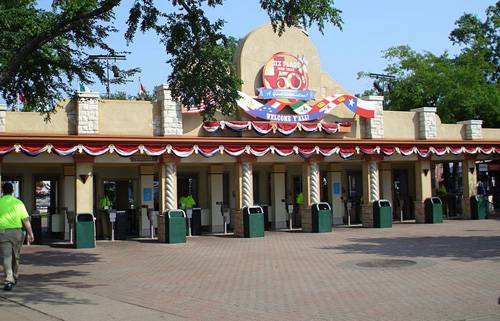
Source: Wikipedia.
Anyone who wants to enjoy a big city ambiance with a couple of even bigger cities right on the doorstep, then Arlington, Texas is a good place to live. Nestled between Dallas to the east, and Fort Worth to the west, Arlington does have a lot going for it. But how does this city of 375,600 people stack up when we look at crime, education, employment, and cost of living?
Safety in Arlington
Looking at the crime statistics Arlington as a whole doesn’t come across as the best place to live – the city’s crime index is 67 percent higher than the Texas average, and this puts Arlington as safer than only 10 percent of the cities in the nation. Your chances of being a victim of crime in Arlington are 1 in 20 but that’s more likely to be petty crime or property crime than anything else. Violent crime is not such a serious problem – with a 1 in 200 chance of being a victim of violent crime in Arlington. Of course, there are some neighborhoods that are worse than others while some of Arlington’s neighborhoods are safe and family friendly – North Arlington is especially safe.
Employment and the Economy in Arlington
Arlington’s economy is kept strong with its good selection of industries – the tourism sector employs many people in the city, working at the theme parks, and in the hotels and other places that service the incoming tourists. Six Flags Over Texas is one of the largest employers in Arlington, as is Arlington Independent School District, the University of Texas at Arlington, and General Motors, who have an assembly plant in the city. The unemployment rate is below the state and national average at 7.1 percent and there’s a low incidence of poverty in Arlington too, sitting at 9.9 percent compared to the Texas average of 17.8 percent and the national average of 12.3 percent.
Cost of Living in Arlington
Living is Arlington does cost a little more than the Texas average (by 3.9 percent), but it’s more affordable than the national average (by 5.6 percent). On the cost of living index housing is the most affordable, coming in at 16 percent lower than the national average. Goods and services, groceries, health care, and transportation all come under the national average, but you do have to pay more for utilities here. They cost 10 percent more than the national average, and 14 percent more than the Texas average.
Schools and Education in Arlington
Arlington is covered by four different independent school districts (ISDs): Arlington, Mansfield, Grand Prairie, and Kennedale, with Arlington itself being the largest. There are 85 public schools and 21 private schools in the city, as well as 10 post secondary schools. This includes the University of Texas at Arlington, which is just west of Central Arlington. Overall, graduation rates in Arlington are good with 84.9 percent graduating high school compared to the Texas average of 67 percent and the national average of 58.6 percent. With the university being here there’s also a good record when it comes to completing bachelors – 30.4 percent in Arlington compared to the statewide average of 10.3 percent and the nationwide average of 13.9 percent.
Air Quality in Arlington
Air quality in Arlington is pretty good if you are sensitive to these things. The air quality index is 9.6 percent higher than the Texas average, and 13.5 percent greater than the national average. Only 2 days in a year are considered to have poor air quality, while 79 are moderate, and 250 are good.
































